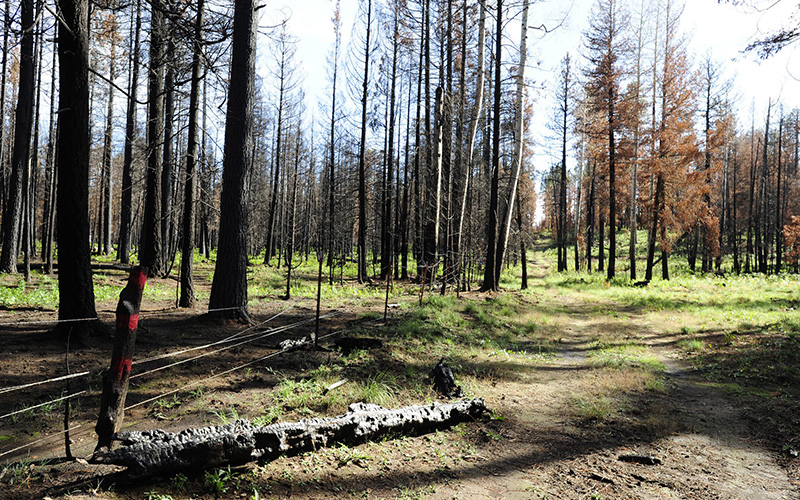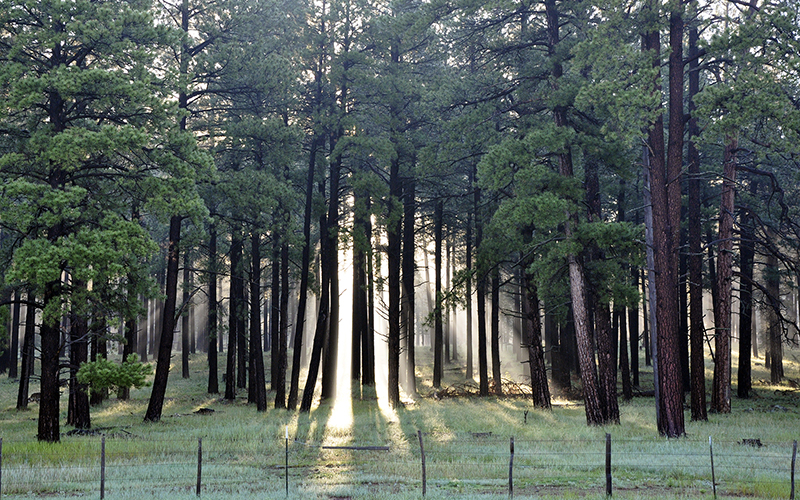PHOENIX – After a season marked with catastrophic wildfires in the West, government forestry and conservation leaders in Arizona have accelerated a tree-thinning program in the Coconino National Forest.
The partnership between the Nature Conservancy and U.S. Forest Service is supposed to jumpstart thinning under a Future Forest project, launched this fall with a 20,000-acre thinning project in the Kaibab and Coconino National Forests near Flagstaff.
Arizona Republican Sen. Jeff Flake expressed his unhappiness with what he called a lack of progress at a news conference this fall.
“We just need to move faster,” he said.
Pat Graham, state director of Future Forest, said that the Nature Conservancy agreed to radically increase thinning under the program in what he called a “learning laboratory” for forestry in the Southwest.
“We need to go from clearing 10,000 acres a year to 50,000 acres a year if we are going to meet our goal of thinning a million acres in the next 20 years,” Graham said.
“We’ve lost over 25 percent of our Ponderosa forests to fire in a decade in Arizona,” Graham said. “So, the idea of doing nothing means we’re condemning these forests to burning to the ground.”
“We’re in a new era that demands efficiency and an accelerated response. Arizona water supplies and communities are at risk,” Cal Joyner of the Forest Service said in a news release.
“Rather than painting individual trees to remove, we now use tablet technology to digitally map the forest and guide harvesters where to harvest,” Joyner said. “We are getting the work done faster and cheaper and we have a digital record that enables us to track progress.”
Under a contract with forest and timber company Campbell Global, the first trees were scheduled to be cleared in late November.
“We have tailored an economic model for northern Arizona,” Steve Levesque, Campbell Global managing director of operations, said in a news release. “This information helps reduce costs to make harvesting small-diameter wood sustainable for the industry.”
The program uses prescribed burning and mechanical thinning of younger, smaller trees, which are problematic and clutter the forest, creating conditions for wildfires, according to Graham and Neil Chapman, Northern Arizona restoration manager for the Nature Conservancy.
In the past, trees to be thinned were marked with paint, but this method was expensive and time-consuming, Chapman said. This dated practice has been replaced with detailed maps on computer tablets.
Sandy Bahr, Sierra Club Grand Canyon chapter president, said the group is wary of thinning projects that involve special interest groups. She also said that thinning projects should not be limited to Ponderosa pines but should consider the entire forest.
“We have been supportive of thinning projects, especially around communities,” Bahr said. “But not the kind of projects that basically become logging operations disguised as restoration.”
By thinning the forest to a natural condition, runoff water increases by about 20 percent, according to Graham and studies by the Nature Conservancy.
“The attempts to solve the problem have really come up short,” Graham said. “So, it’s time to think differently and change the status quo. We believe the project will help transform the way the forests are managed and will result in securing clean water, protecting communities and reducing the risk of fire.”

